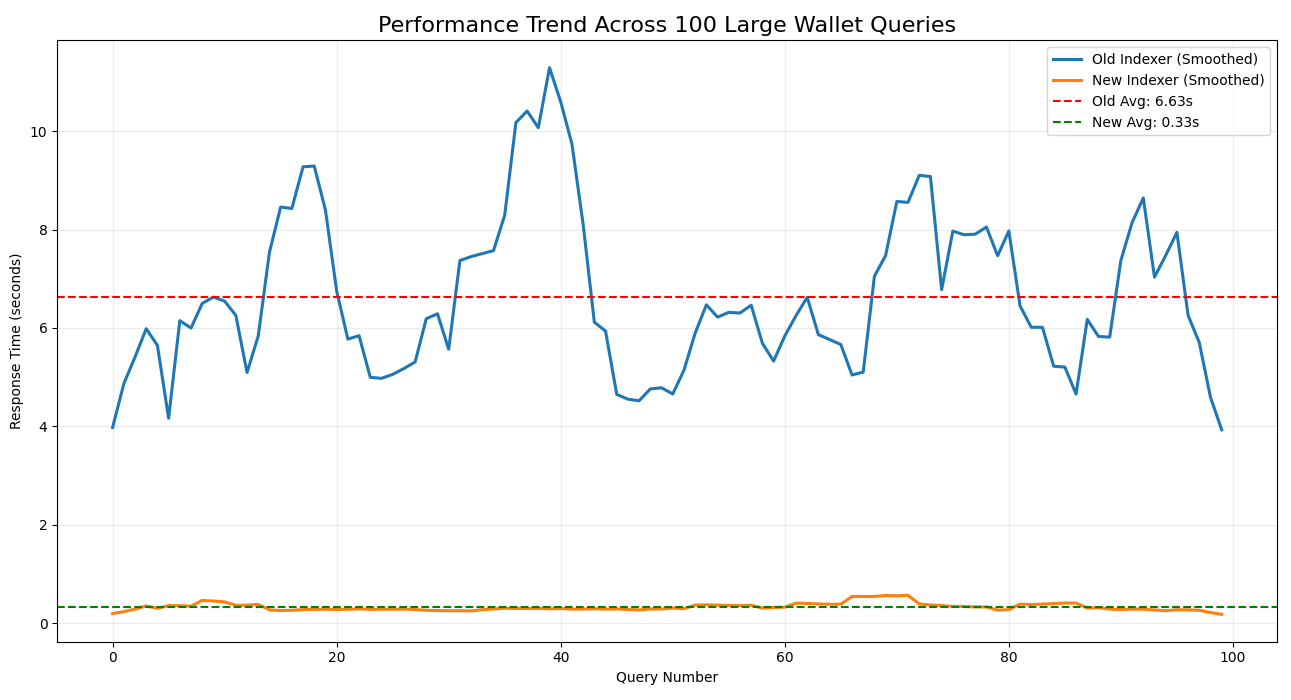Bitcoin Data API Just Got (a lot) Faster


.jpg)
If you work with Bitcoin long enough, you end up calling the same methods on repeat: fetch the UTXOs for an address, check its balance, pull its transaction history. These calls sit at the heart of almost every Bitcoin application, wallets, exchanges, explorers, payment rails, fee engines, and anything else built on the network’s UTXO model.
Tatum has supported these BTC Data API endpoints for years. They power thousands of apps every day. Recently, we upgraded the engine behind them. Quietly, without changing the interface, we rolled out a new UTXO indexer that makes these calls far faster and more reliable, especially for large or high-activity addresses.
This is one of those upgrades every Bitcoin team eventually needs, even if they don’t realize it at first. The UTXO model is powerful, but the cost of scanning big addresses grows over time unless the indexer is designed to handle it.
Here is what changed.

Three of the most heavily used Bitcoin endpoints now run through the improved indexer:
This is the call behind UTXO selection and transaction building. If you are assembling inputs for a withdrawal, performing consolidation, or sweeping funds, this is the endpoint you lean on. The new indexer makes this dramatically faster for addresses with large UTXO sets.
GET /v3/bitcoin/address/balance/{address}
This endpoint calculates the balance of a Bitcoin address by summing all of its unspent outputs. Since Bitcoin balances come directly from UTXOs, this call gives you the exact amount of BTC that is available to spend. With the upgraded indexer behind it, balance lookups are now much faster and stay consistent even for addresses with large histories.
GET /v3/bitcoin/transaction/address/{address}
Used by explorers, dashboards, deposit monitoring systems, and anything that needs a complete view of an address's activity. No new endpoints, no migration steps, nothing to change. You keep using the same calls, they simply return faster.

We rebuilt the Bitcoin UTXO indexer that powers these endpoints. The upgrade is designed specifically to handle large, high-activity wallets far more efficiently. Where the previous indexer would slow down or hit an internal limit at around 170K transactions, the new version removes this cap entirely. It handles any wallet size, no matter how deep the history goes.
During testing, we replayed traffic from a sample of high-volume addresses — the kind used by exchanges, escrow flows, mining payouts, and automated services that create thousands of outputs over time. Against the new indexer, these calls ran:
Small addresses were already fast. These gains focus on the wallets that traditionally cause bottlenecks: large, heavily used addresses with tens or hundreds of thousands of UTXOs.
For teams operating infrastructure, this upgrade removes an entire class of problems. You no longer need to work around slow UTXO scans, build your own indexing layer, or implement complicated batching logic. The same endpoints now return quickly and consistently, even under heavy load.
This upgrade makes a real difference across several types of applications.
- Faster balance refresh
- Quicker initial syncing
- Much smoother behavior for users receiving many small transactions
- Faster UTXO selection for hot wallets
- More predictable and stable withdrawal pipelines
- Reliable data even for extremely active addresses
- Faster deep-history scans
- Better performance for large on-chain entities
-More responsive dashboards and historical data backfills
A lot of developers compare BTC RPC nodes and look for the “best” or “fastest” option. Raw RPC works well for simple calls, but RPC alone struggles when wallets accumulate large UTXO sets.
That’s where an optimized indexer makes the difference.
A fast UTXO indexer gives you structured Bitcoin data without putting all the work on the node. It essentially brings together the strengths of a high-performance RPC with a dedicated indexing layer, without requiring you to maintain that infrastructure yourself.
Whether you’re building a wallet, running analytics, or powering your own internal ledger, this upgrade is aimed at helping those systems stay fast even as the UTXO load grows.
By improving the indexer behind the scenes, you get:
- Faster responses on large wallets
- More stable balance checks
- Quicker transaction history retrieval
- Predictable performance as addresses grow
And you get all of that without changing your integration.
If you’re new to Tatum, creating a free API key in the Dashboard takes only a moment. Run a few tests against any large Bitcoin address and you’ll feel the difference right away.
API Key This Way.Everything is already live. Just keep using the same endpoints you’re familiar with:
Get UTXOs → /v4/data/utxos
Get Balance → /v3/bitcoin/address/balance/{address}
Get Transactions → /v3/bitcoin/transaction/address/{address}
No new APIs, no migration, just better performance where it matters most. If your app relies on Bitcoin data, this upgrade should make everything feel noticeably quicker and more reliable.
Build blockchain apps faster with a unified framework for 60+ blockchain protocols.